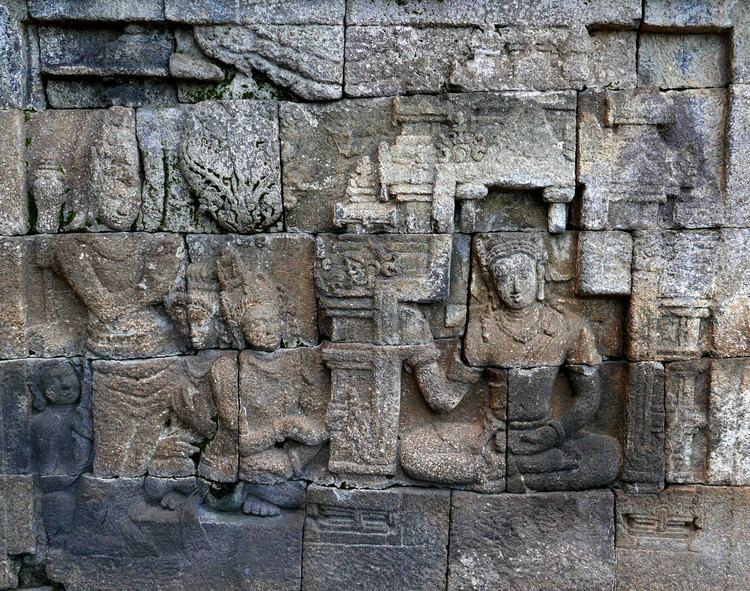 | ||
Similar Avatamsaka Sutra, Lankavatara sutra, Vimalakirti Sutra, Mahāyāna Mahāparinirvāṇa Sūtra, A Guide to the Bodhisatt | ||
Avatamsaka sutra maitreya s speech to sudhana book 39 gandavyuha sutra
The Gandavyuha Sutra or Sutra of the Entry into the Realm of Reality is a Buddhist Sutra of Indian origin that records one of the world's most celebrated spiritual pilgrimages, and comprises the 39th chapter of the Flower Garland Sutra. The Sutra is described as the "Sudhana's quest for the ultimate truth", as the sutra chronicles the journey of a disciple, Sudhana, as he encounters various teachings and Bodhisattvas until his journey reaches full circle and he awakens to teachings of the Buddha.
Contents
Overview
In his quest for enlightenment, Sudhana would converse with a diverse array of 52 kalyāṇa-mittatā (wise advisors), 20 of whom are female, including an enlightened prostitute named Vasumitrā, Gautama Buddha's wife and his mother, a queen, a princess and several goddesses. Male sages include a slave, a child, a physician, a ship's captain. The antepenultimate master of Sudhana's pilgrimage is Maitreya. It is here that Sudhana encounters the Tower of Maitreya, which — along with Indra's net – is a most startling metaphor for the infinite:
In the middle of the great tower... he saw the billion-world universe... and everywhere there was Sudhana at his feet... Thus Sudhana saw Maitreya's practices of... transcendence over countless eons (kalpa), from each of the squares of the check board wall... In the same way Sudhana... saw the whole supernal manifestation, was perfectly aware of it, understood it, contemplated it, used it as a means, beheld it, and saw himself there.
The penultimate master that Sudhana visits is the Mañjuśrī Bodhisattva, the bodhisattva of great wisdom. Thus, one of the grandest of pilgrimages approaches its conclusion by revisiting where it began. The Gaṇḍavyūha suggests that with a subtle shift of perspective we may come to see that the enlightenment that the pilgrim so fervently sought was not only with him at every stage of his journey, but before it began as well—that enlightenment is not something to be gained, but "something" the pilgrim never departed from.
The final master that Sudhana visits is the bodhisattva Samantabhadra, who teaches him that wisdom only exists for the sake of putting it into practice; that it is only good insofar as it benefits all living beings. Samantabhadra concludes with a prayer of aspiration to buddhahood, which is recited by those who practice according to Atiśa's Bodhipathapradīpa, the foundation of the lamrim textual traditions of Tibetan Buddhism.
In a November 1, 2016 article in the Bhutanese newspaper Kuensel mention was made of the annual Moenlam (or Monlam in Tibetan language) as performed by the Drukpa Kagyu denomination of Buddhism.
During this Moenlam a prayer is said that stems from the Gaṇḍavyūha. The Himalayan traditions use the translation made by Shiksananda, not the earlier version of Buddhabhadra. The last four lines of the Gaṇḍavyūha, as translated by Th. Cleary the text reads: "By the endless surpassing blessing realized from dedication / To the practice of good, / May worldlings submerged in the torrent of passion / Go to the higher realm of Infinite Light."
The Bhutanese, i.e. Drukpa version runs as follows: “Through the true and boundless merit, attained by dedicating this ‘aspiration to good actions’ may all those now drowning in the ocean of suffering, reach the supreme realms of Amitabha.”
In the Gaṇḍavyūha there is no mention of Amitabha Buddha, nor of "the supreme realms of Amitabha."
